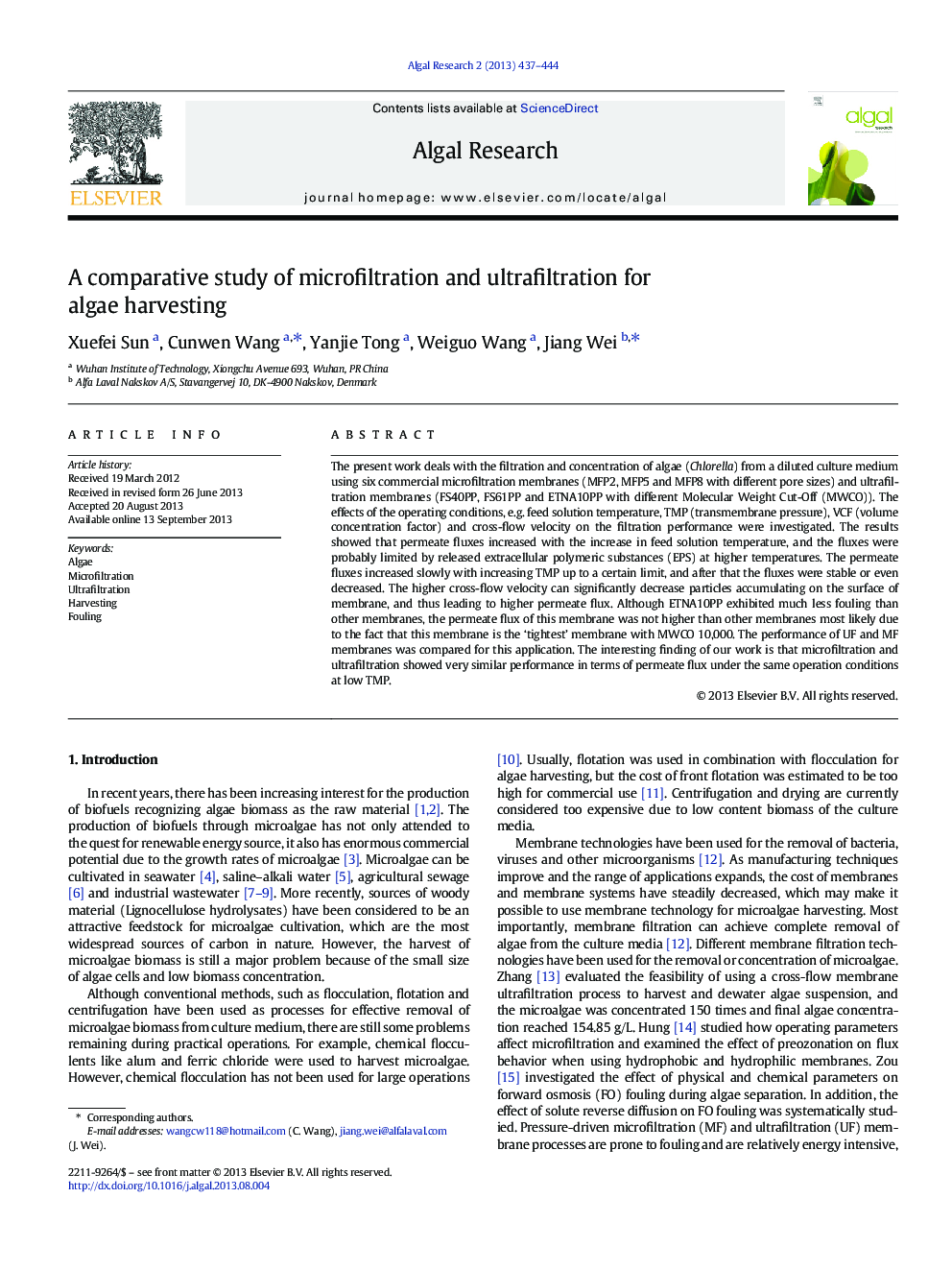| Article ID | Journal | Published Year | Pages | File Type |
|---|---|---|---|---|
| 10687554 | Algal Research | 2013 | 8 Pages |
Abstract
The present work deals with the filtration and concentration of algae (Chlorella) from a diluted culture medium using six commercial microfiltration membranes (MFP2, MFP5 and MFP8 with different pore sizes) and ultrafiltration membranes (FS40PP, FS61PP and ETNA10PP with different Molecular Weight Cut-Off (MWCO)). The effects of the operating conditions, e.g. feed solution temperature, TMP (transmembrane pressure), VCF (volume concentration factor) and cross-flow velocity on the filtration performance were investigated. The results showed that permeate fluxes increased with the increase in feed solution temperature, and the fluxes were probably limited by released extracellular polymeric substances (EPS) at higher temperatures. The permeate fluxes increased slowly with increasing TMP up to a certain limit, and after that the fluxes were stable or even decreased. The higher cross-flow velocity can significantly decrease particles accumulating on the surface of membrane, and thus leading to higher permeate flux. Although ETNA10PP exhibited much less fouling than other membranes, the permeate flux of this membrane was not higher than other membranes most likely due to the fact that this membrane is the 'tightest' membrane with MWCO 10,000. The performance of UF and MF membranes was compared for this application. The interesting finding of our work is that microfiltration and ultrafiltration showed very similar performance in terms of permeate flux under the same operation conditions at low TMP.
Related Topics
Physical Sciences and Engineering
Energy
Renewable Energy, Sustainability and the Environment
Authors
Xuefei Sun, Cunwen Wang, Yanjie Tong, Weiguo Wang, Jiang Wei,
